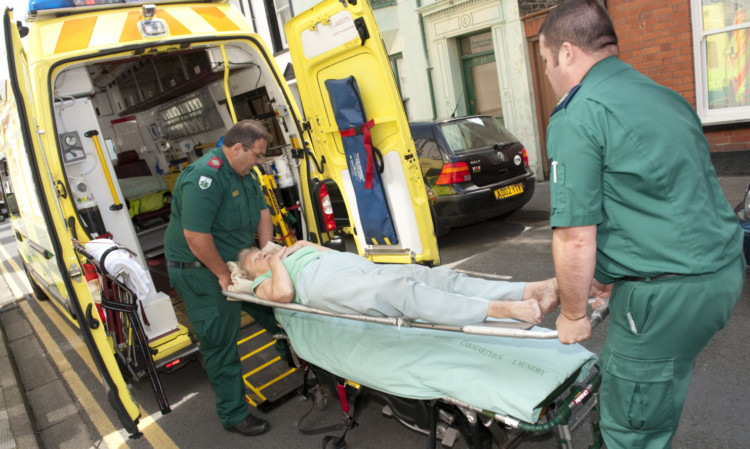
Vulnerable patients’ safety in question.
Ambulance bosses have been slammed for failing to check the criminal history of paramedics.
An investigation has been launched after the North East Ambulance Service NHS Foundation Trust failed to carry out Disclosure and Barring Service checks on frontline staff.
Red-faced bosses discovered they had no record of checks for up to 388 employees during an internal review and immediately brought them in to be vetted.
It potentially means paedophiles, sex offenders and other criminals could have been working with vulnerable adults and children for years.
The checks led to 14 staff being temporarily removed from frontline duties after criminal convictions were discovered and up to 17 had already left without ever having had their backgrounds examined.
The Care Quality Commission (CQC) was alerted to the problem and has carried out a review of the trust.
David Atkinson, regional organiser for Unison’s North East Ambulance Service branch, accused the trust of risking public safety and claimed those responsible must be held to account.
He said: “We are having paramedics all the time being forced to go to Health and Care Professions Council hearings to do with patient safety.
“If it is the rule for them it should be the same for senior management. The Trust’s board should be asking who has made this decision and who is responsible.”
Malcolm Bower-Brown, the CQC’s regional director for the north, said: “The Trust provided us with a report setting out their plans to undertake the required employment checks for all those staff where DBS checks
had not previously been sought, together with the immediate and longer term actions they would be taking to ensure similar issues do not reoccur.
“We have been advised by the Trust that all outstanding checks will be undertaken by April 2014.
“We carried out an inspection of the Trust in early February and in the light of these serious issues, looked closely at recruitment policies and procedures as part of our inspection.
“We will be publishing our report shortly which will detail the findings of our inspection together with any regulatory action we intend to take.”
North East Ambulance Service said of the 388 staff without proof of a check that 268 no longer needed one, and of the remaining 120, 42 were found to have a DBS check and 17 had either left or did not need one.
But bosses decided to check all 388 which led to 14 being flagged up as having committed criminal offences.
They were removed from frontline duties but were later allowed back to work.
The Trust is now carrying out voluntary checks on hundreds more staff and has launched an investigation.
A spokesman said: “All staff are required to inform us, and their registration body if applicable, when an offence is committed.
“Any risk to patient safety is reduced because the majority of our staff work with a partner and those staff without a DBS check were allocated to work on a double crew until their check was confirmed.
“An investigation into why this backlog of checks occurred is being undertaken and we are co-operating with our regulators to ensure this is resolved as quickly as possible.”
Last week The Sunday Post revealed the North East Ambulance Service Trust was calling thousands of taxis to take people to hospital after they dialled 999.
During 2013 the Trust sent taxis for 2,609 patients who dialled 999 but were not deemed to be suffering life-threatening injuries.
This included 71 journeys which were aborted because the patient was not there when the taxi arrived.
In total the Trust spent £493,000 last year taking people to hospital in taxis, including emergency calls and patient transfers.

Enjoy the convenience of having The Sunday Post delivered as a digital ePaper straight to your smartphone, tablet or computer.
Subscribe for only £5.49 a month and enjoy all the benefits of the printed paper as a digital replica.
Subscribe